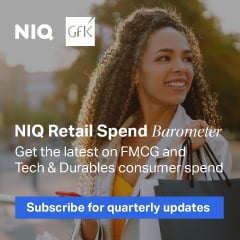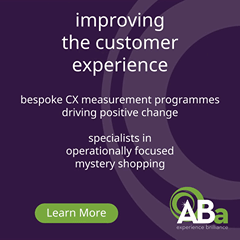Why UK Retail professionals need advanced data analytics to enhance decision making
By Phillip Sewell, CEO and co-founder Predyktable
Most c-suite UK Retail professionals lack the data quality and predictive analytics capabilities needed to best support business-critical, forward decision making. This is the conclusion of our research that canvased the opinions of over 100 senior data executives.
The COVID hangover means that a short-term mentality remains. Profitability is now the short-term goal for Retail professionals to stay ahead in an ever-changing business landscape. Our research also reveals that supply chain optimisation, labour and demand forecasting are the top priorities for Retail professionals.
So, with critical calls being made on ever-changing, complex environmental, economic and consumer behaviours, how effective are the current business intelligence and data analytics solutions that support them?
Challenging data analytics
All executives surveyed agree that business intelligence and data analytics help up to a point. However, despite billions of pounds spent globally on data platforms, data repositories and a whole stack of tools, most executives still lack the help they need to turn data into forward actions that maximise profits.
Most are overwhelmed by vast data volumes offering little or no recommendations of what it means to them. According to IDC research, on average, retailers hold around a 1000% more data on consumers’ behaviour compared to 2010. Many executives also use solutions that aren’t tailored for their specific forward-thinking needs because they are heavily reliant on historic data and insights.
For example, I’ve spoken to Retail industry leaders about their approaches to forecasting sales given the unprecedented disruption caused by Covid. Worryingly, most are using 2017 & 2018 sales data to predict the shape of demand this year. With ever-changing market dynamics, rear-facing and current insights no longer accurately represents what will happen tomorrow. It’s an unsustainable approach.
There’s also not enough focus on identifying and understanding wider external data sources. Traditional data analytics approaches often rely on internal data sources and miss out on augmenting this with the breadth and depth of external data-driven insights. This means executives miss out on valuable holistic insights of the market landscape, competitors, emerging trends and more. This time-consuming research isn’t being done, so the quality and depth of insights aren’t there to support accurate predictions.
It’s no surprise to hear that over 65% of executives say their data analytics tools aren’t providing the best value across the business. While flagging a clear ROI issue, over 50% believe it’s because their data analytics tools and approaches can’t deliver the data availability and quality to support confident future decision making.
More predictive and ‘prescriptive’ data insights are urgently required by Retail brands: providing forward recommendations that support more profitable business-critical decisions. Over 86% of executives surveyed view these as their most sought-after capabilities. While most executives are planning to investigate predictive analytics tools, 70% said they will favour those that cater for their specific business challenges.
What’s next for data analytics
To solve these issues, there’s an increasingly sophisticated data analytics capability. Welcome to ‘prescriptive analytics,’ and when offered as a service, it’s the most advanced stage of data analytics’ evolution. Here’s where it sits:
- Descriptive analytics – what happened?
- Diagnostic analytics – why did it happen?
- Predictive analytics – what might happen in the future?
- Prescriptive analytics – what should we do next based on predictions?
- Prescriptive analytics as a service – what do we do and how can this be actioned and implemented?
Prescriptive analytics as a service not only predicts future events with precision but also provides clear and actionable recommendations on how Retail executives can achieve optimal outcomes. We’re talking about prescriptive analytics as a managed service: because to really deliver, it must be a journey, not a one-off or piecemeal exercise.
It’s a service that uses pre-built, highly sophisticated, machine learning prediction models, enriched with wider global, regional and domain insights. These include global & local trends such as weather, travel, economic, demographic, industry and localised demand spikes. Valuable insights are generated that feed approximately 70% of the prediction outputs for organisations. Outputs also dynamically adapt and update in real-time with ever-changing market conditions.
Data scientists then address the remaining 30% by augmenting external prediction model insights, with a Retailer’s own data, customised to meet its specific business requirements. A better understanding is gained on the historical impact of an organisation’s actions on their results – compared to the wider market. By examining these variables and their relationships, previously hidden, connected, patterns and trends are revealed to generate foresight that fuels increasingly accurate recommendations on future actions.
These results are automatically delivered into an organisation’s systems and clearly presented in intuitive infographics. Data scientists continually find new insights: keeping models relevant to fluctuations in demand, seasonal variations, market trends, and other external factors. Real-time foresights and recommendations reflecting these factors means organisations can swiftly adjust their strategies to make future decisions faster.
What outcomes can prescriptive analytics deliver?
Prescriptive analytics can enable an exciting range of use cases that unlock hidden insights, optimise processes and drive profitable outcomes.
How about knowing exactly which areas to reduce cost, while gaining more value across marketing spend, labour optimisation and demand forecasting activities. Or how about understanding precisely where to make more money within the most profitable customer segments. Retaining high-value customers becomes easier by knowing which products and services best complement customers’ existing purchase history, interests and lifestyle. These are just the start, there are so many exciting possibilities.
Final thoughts
What’s crystal clear is that current data analytics tools are not enough to support Retail executives’ business-critical, forward decision making. In the current economic climate, where every big decision really matters, applying gut instinct and guess work isn’t good enough.
Prescriptive analytics offers meaningful insight to accurately predict and recommend where future actions will generate the greatest value. Ultimately, those forward thinkers using its power to augment their decision-making processes will gain a significant advantage over those that don’t.














